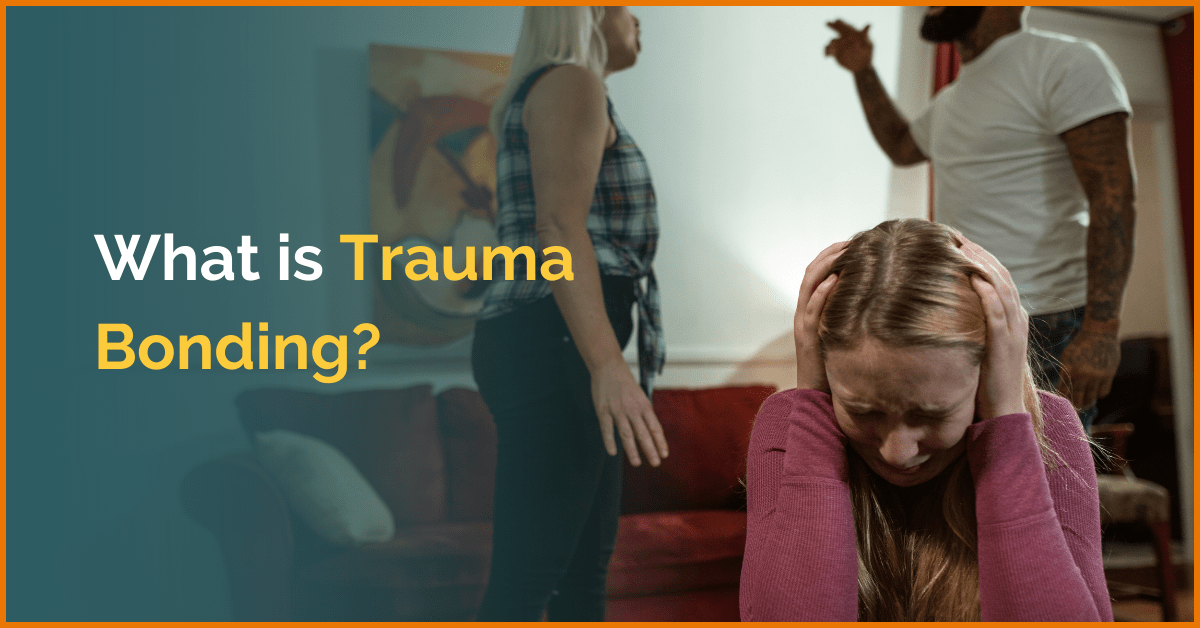What is Trauma Bonding? A Definition
For support workers helping others, a common question is “what is trauma bonding”?
Unfortunately, sometimes trauma comes from the very people we care most about – perhaps our parents, partner or children.
Trauma bonding describes the attachment someone feels for their abuser.
A trauma bond forms during a cycle of treatment – positive reinforcement, abuse and manipulation. The cycle through these three stages is most common in domestic abuse, but they can happen in many other types abuse.
Often there is a period of intense kindness at the start of the cycle. When the abuse takes place, especially the first time, it seems out of character and is surprising, creating mixed emotions in the abused person. After the abuse temporarily ends, the apologies, assurances and efforts to “make amends” start, often influencing the person’s decision to stay in the relationship.

This is perhaps the worst impact of trauma bonding – the periods of positive re-enforcement and manipulation lead the person to stay in the abusive relationship. A common trauma bonding sign.
Patrick Carnes used the term trauma bonding in 1997, as he described why people bond to those who hurt them. It can occur in any situation of abuse, whether or not that’s a long or short period of time, although it’s more common to happen where the abuser has first expressed their love for the person they will later abuse.
It’s this cycle of abuse and then manipulation (that it won’t happen again) followed by positive re-enforcement of their love for the abused, that makes trauma bond more likely in longer-term relationships.
Signs of Trauma Bonding
Not all trauma or abuse will involve bonding as well. The common indications trauma-bonding is involved includes:
- The victim often covers-up, hides or downplays the abuse
- The victim readily offers excuses for the abuser’s behaviour
- The victim thinks and feels the abuse was their fault, and was caused by them in some way
Risk Factors for Trauma Bonding
Although it may appear counter-intuitive for an abuser to seek out someone who appears strong and independent, this happens frequently and part of the reason is so the abuser can feel superior as they gradually break the victim down over time.
Some of the factors that may increase the risk of trauma bonding are :
- People with dependent personalities
- Anyone who puts a lot of value on “the good times” and is quick to forgive
- Anyone with a history of being abused in childhood or past relationships
- People with disorganized, anxious, or avoidant attachments
- People with the tendency to question themselves
- People with separation anxiety
- People who are sensitive to rejection
How to Heal From Trauma Bonding

The bond felt by the abused towards the abuser adds additional complexity to recovering and healing from the trauma. How severe the abuse it, how long it lasts and how the person responds to the abuse are the biggest influences on how much impact the trauma has.
The healing journey explores how the bond was formed and also the feelings of the trauma-survivor, which often include feelings of guilt for not having sooner to a potentially life-threatening situation.
Patrick Carnes surmised that trauma bonding happens because of the way our brain handle trauma and the choices we have to make to survive.
Healing from the trauma involves getting past that bond, seeing the situation for what it was using an objective viewpoint, and moving beyond it. Understanding the abuse was not the victim’s fault and exploring ways to internalize this belief is key.
Improving feelings of self-worth is often a priority – the abuser often creates a sense of dependence in the victim, systematically lowering their self-esteem as a by-product of the manipulation. Making a point to be kind to themselves, the self-doubt and guilt felt by victims can be helped by self-care, forgiveness, learning more about the manipulations that took place and finding ways to feel good about themselves again.



